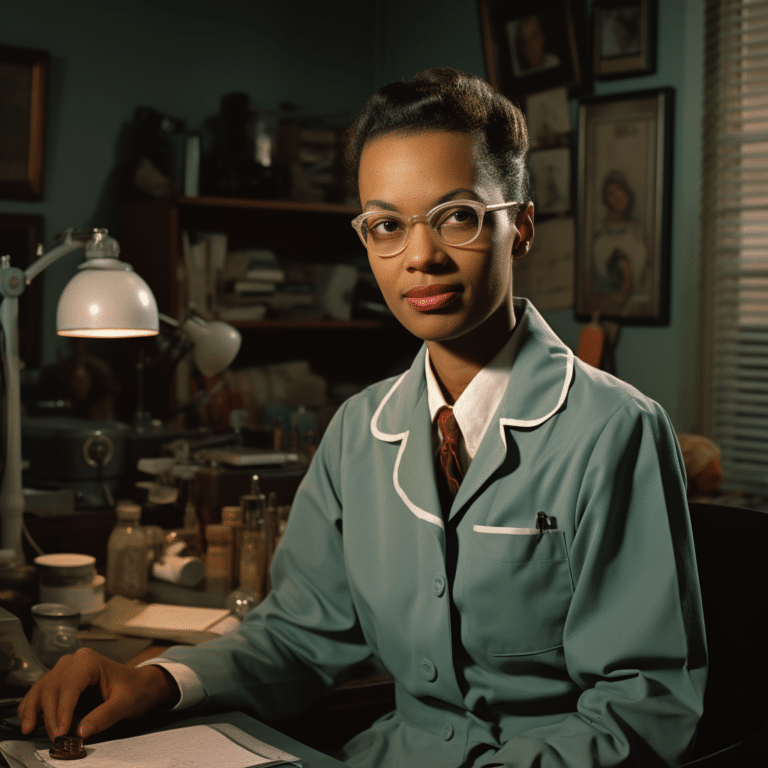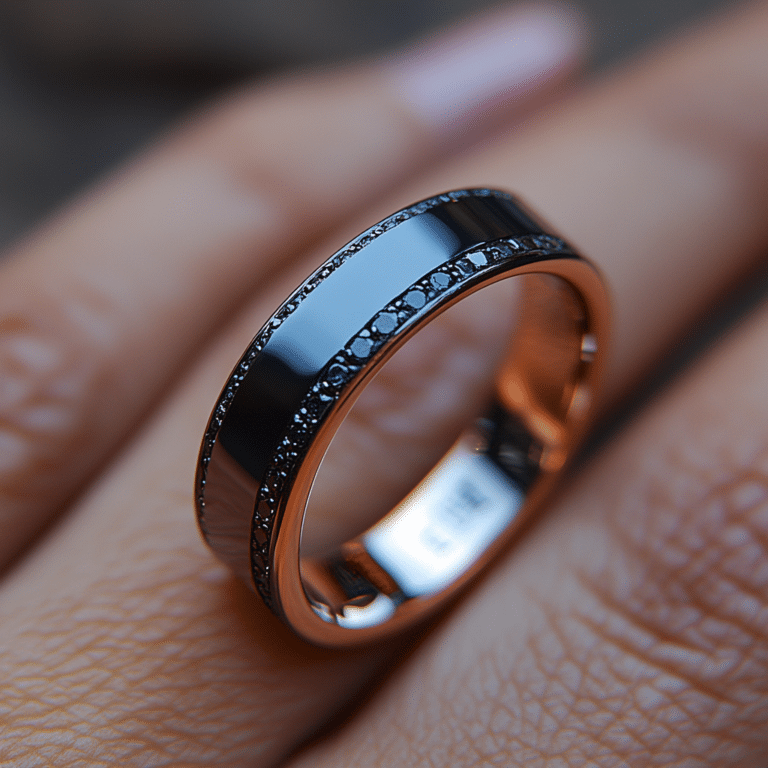The narrative of Dr. Vivien Thomas is a stirring saga of intellect and determination braiding through the veins of medical history. In an era when the color of his skin was a barrier thicker than the walls of operating theaters, Thomas’s genius transcended prejudices, revolutionizing cardiac surgery and leaving an unerasable mark on the healing sciences. He navigated a world full of socioeconomic hurdles, not with the formal honorific “Doctor” affixed to his name during his peak, but with a relentless spirit that would forge a legacy too powerful to be hushed by the shadows.
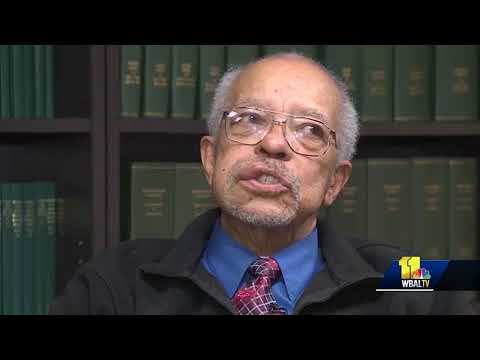
The Early Years of Dr Vivien Thomas: From Carpenter to Medical Pioneer
Born into an epoch where dreams were often deferred, Dr Vivien Thomas’s early life was a battle against formidable socioeconomic gales. The Great Depression had crumbled his aspirations like a house of cards; a young, hopeful carpenter’s apprentice, his reveries of attending Tennessee State College and pursuing medical school were swept away by financial destitution.
Despite the bristling hardships, a twist of fate landed him a job at Vanderbilt University—not in the grand lecture halls but within the confines of a laboratory, initially as a janitor on a meager $12 per week wage. Yet, the man whose role was presumptively janitorial soon became a silent heartbeat in the world of medical research. Thomas’s nimble carpenter hands, which once carved wood, now deftly navigated the intricacies of surgical instrumentation and experimental procedures, side by side with Dr. Alfred Blalock. And what began as a role bearing the title of a janitor evolved into a companionship and a professional partnership that was to challenge the very ebb and flow of medical history.
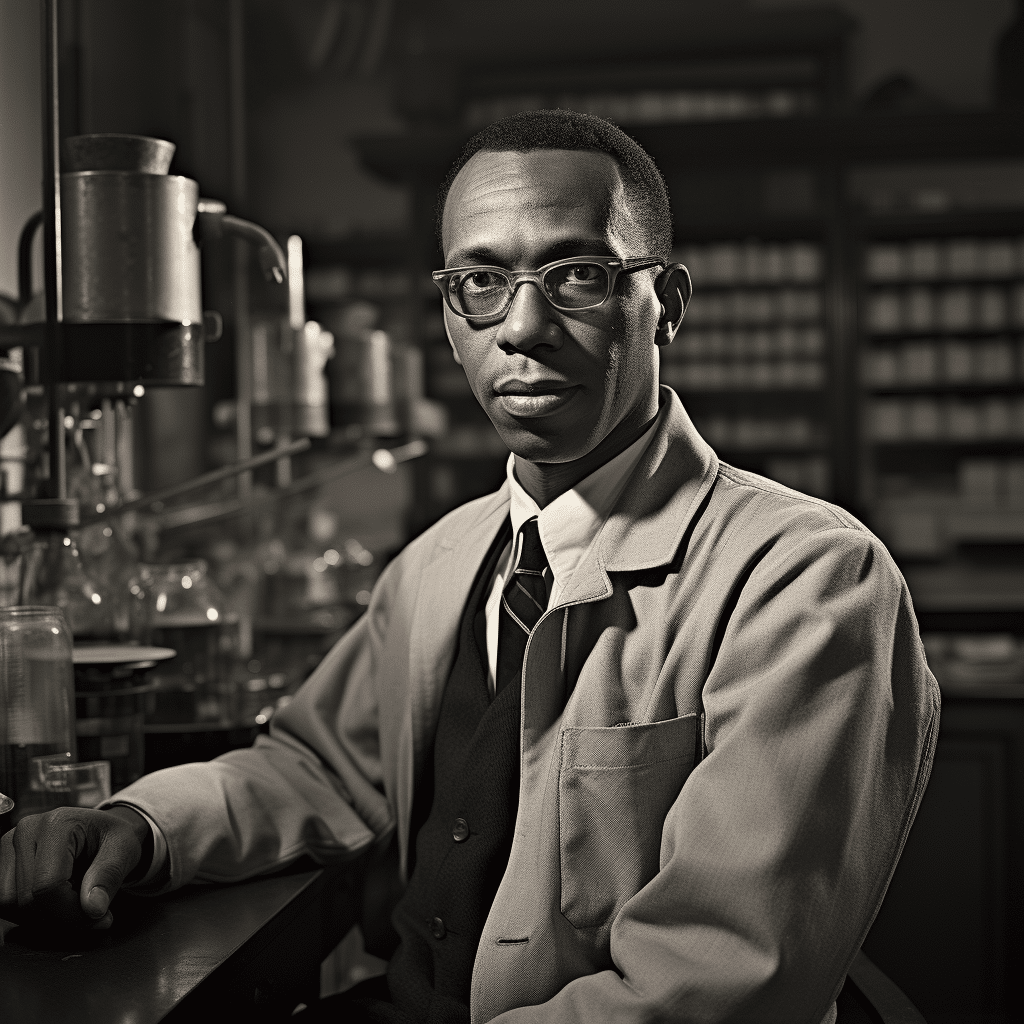
Vivien Thomas’s Innovations in Cardiac Surgery
Inarguably, the crown jewel in Vivien Thomas’s treasury of contributions was the Blalock-Taussig shunt—a technique that rerouted blood flow in patients with cyanotic heart defects, famously known then as “blue baby syndrome.” The inaugural operation on 15-month-old Eileen Saxon was a ray of hope in a previously moribund prognosis. Although the skies over her life later darkened—passing away shortly after a subsequent surgery—the dawn of cardiac surgery for congenital heart conditions had broken with that first successful procedure.
The hands that conceptualized this groundbreaking technique were also responsible for birthing an arsenal of surgical instruments. Vivien Thomas’s ingenuity crafted tools designed to dance delicately within the human body, many of which prevail in the operating rooms to this very day. With meticulous precision, Thomas forged a path for safer and more reproducible heart surgeries, a rhythm that still resonates with each heartbeat saved by his inventions.
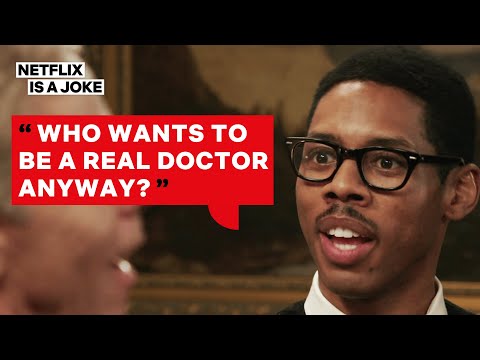
| Category | Details |
|---|---|
| Full Name | Vivien Theodore Thomas |
| Birth – Death | August 29, 1910 – November 26, 1985 |
| Professional Title | Laboratory Supervisor; Surgical Assistant; Instructor of Surgery |
| Initial Career Aspiration | Medical Doctor (aspired to attend Tennessee State College and then medical school) |
| Impact of the Great Depression | The economic downturn wiped out his savings and forced him to postpone college education. |
| Early Career | Carpenter’s apprentice at age 19; Later employed at Vanderbilt University in Dr. Alfred Blalock’s laboratory |
| Salary | Started at $12 per week; job title was officially “janitor”, though he performed the role of research and surgical assistant. |
| Key Contributions | Co-developed surgical techniques to treat blue baby syndrome, including the groundbreaking Blalock-Taussig shunt procedure; contributed significantly to the study of surgical shock and kidney function. |
| First Success Story | Assisted in successfully performing the first Blalock-Taussig shunt procedure on 15-month-old Eileen Saxon in 1944, which provided temporary relief for her cyanotic heart condition. |
| Acknowledgment by Hopkins | In 1976, received an Honorary Doctor of Laws from Johns Hopkins University due to restrictions; appointed as Instructor of Surgery at the Johns Hopkins Medical School. |
| Relationship with Blalock | Developed a close professional and personal relationship with Dr. Alfred Blalock; their partnership was critical to the success of their medical research and surgical advancements. |
| Portrayal in Media | Subject of the 2004 HBO film, “Something the Lord Made”, which depicts Thomas’s challenges and achievements in the field of medicine. |
| Legacy | Remembered as a pioneering figure in cardiac surgery and for overcoming significant racial barriers; his techniques and teachings have saved countless lives and influenced generations of medical practitioners. |
The Extraordinary Mentorship of Dr Vivien Thomas
Much like the layers of the heart he helped mend, Thomas’s influence was manifold, extending beyond the confines of the operation theater into the realms of mentorship. His tutees, a pantheon of now-renowned surgeons, were sculpted with the same precision he applied to his surgical designs. Among them, Dr. Denton Cooley and Dr. Levi Watkins Jr. stand as testaments to the mentorship of Dr Vivien Thomas—his lessons extending beyond the sciences into the corridors of moral fortitude and perseverance.
Dr Vivien Thomas had a mentorship style that was less about dictation and more akin to nurturing a garden of inquisitive minds. His trainees, studded throughout the landscape of medical giants, owe their roots to the quiet but stern tutelage received under his wing—a mentorship philosophy etched not in certificates and accolades, but in the transformation of his mentees’ careers, forever marked by his wisdom.
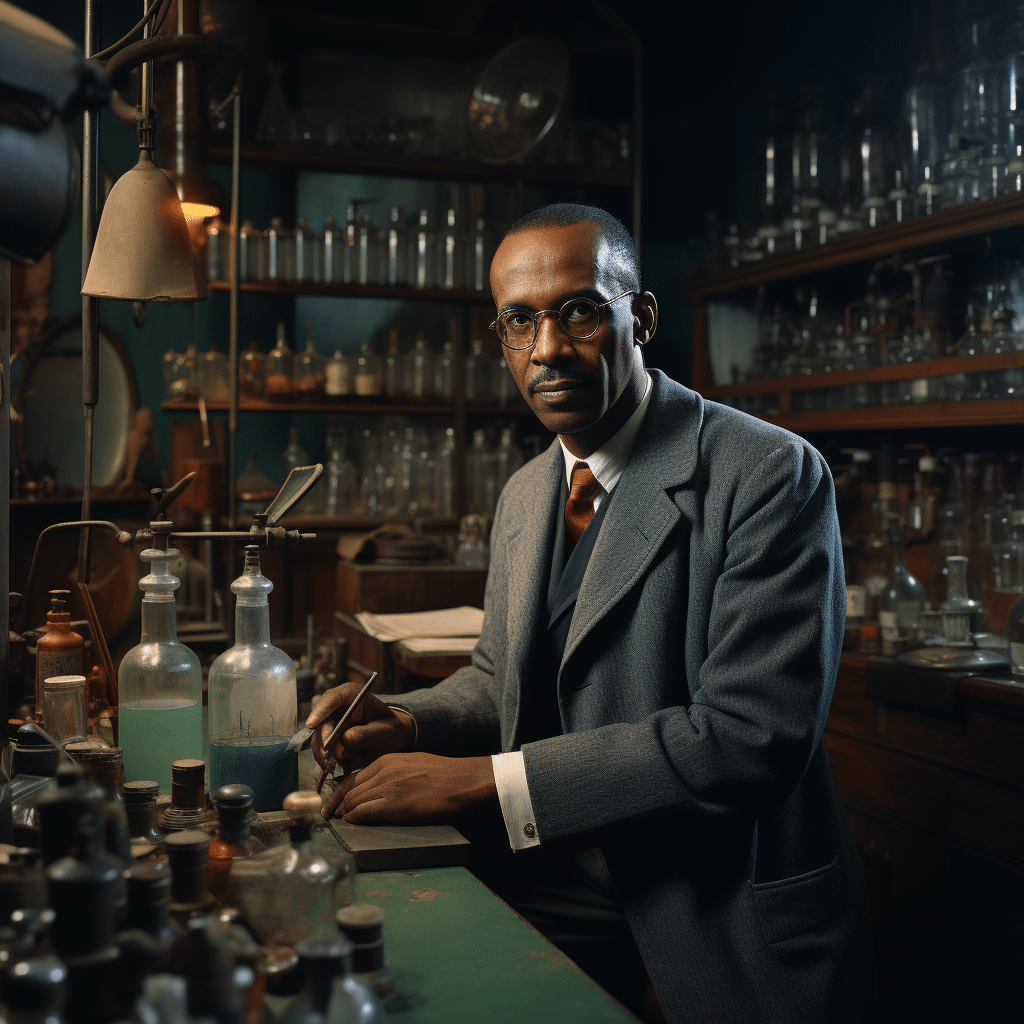
Overcoming Racial Barriers: Vivien Thomas’s Enduring Legacy
In the tapestry of medicine, the threads of racial discrimination towards Vivien Thomas were woven with a painful precision. He navigated this intricate lattice with an enviable stoicism, chiseling his legendary stature in an era etch-marked by prejudice. Despite the racial challenges, his monumental contributions to cardiac surgery etched a narrative of resilience and tenacity.
He was a man who not merely endured but reforged racial barriers into stepping stones. His legacy is a clarion call that talent cannot be overshadowed by the tyranny of bigotry—a resonance that continues to dismantle racial prejudices in medicine and emboldens future generations to pursue their dreams, regardless of societal impediments.
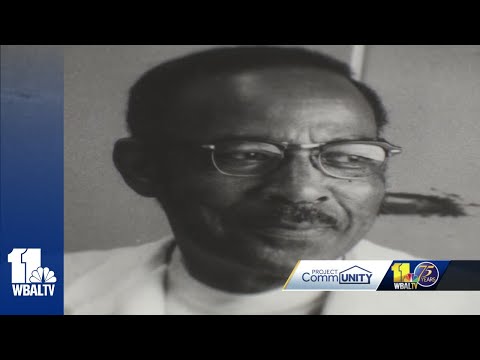
Vivien Thomas at Johns Hopkins: A Surgical Technician’s Triumph
The hallowed halls of Johns Hopkins were graced by Dr Vivien Thomas in a time intertwined with innovation and tradition. His influence pervaded its corridors, touching the fabric of the institution’s surgical procedures and protocols. In an awe-inspiring twist of poetic justice, Thomas would be conferred an honorary doctorate and appointed as Instructor of Surgery at Johns Hopkins Medical School—the same institution where he once held the title of a laboratory assistant.
His surgical contributions, undeniably profound, were a triumph not just for a man who transcended his technician’s title, but also for a community previously sidelined in the landscape of medicine. Vivien Thomas’s life at Johns Hopkins was a testament to the undeniable truth that the might of skill and knowledge knows no bounds—a veritable footprint that reforms the very earth of the medical field.
The Genius Behind the Scenes: Vivien Thomas’s Under-Recognized Contributions
Behind the curtain of medical breakthroughs and the glare of operating room lights, Vivien Thomas’s genius simmered in a quiet undercurrent. It wasn’t until much later that the expanse of his contributions would be genuinely recognized—initial overlooked sketches of his brilliance now brought into the stark light of deserved acclaim.
From the shadows emerged the narrative of a man whose contributions, once under-recognized, now glow with a luminous truth that cannot be dimmed. The history books have been corrected, the records set straight, but the journey to this acknowledgment is a poignant reminder of the numerous unrecognized talents that pulse silently beneath the surface of the medical fraternity.
Dr Vivien Thomas’s Impact on Modern Medicine
Dr Vivien Thomas’s legacy ripples through the corridors of modern medicine with the subtlety of a symphony—a resounding impact that has defined and refined countless lives. From his innovative shunt that gave a fighting chance to cyanotic infants, to his surgical instruments still nestled in the palms of today’s surgeons; his work is a continuous pulse in the living body of medical practice.
The case studies of countless lives mended and saved by Thomas’s techniques are narratives not just of individual survival but of a collective, monumental evolution in healthcare. The statistics are living, breathing testimonies—each number a drummer in the parade celebrating Vivien Thomas’s unyielding contributions to medicine.
The Posthumous Honors of Dr Vivien Thomas
In the afterglow of his life, recognitions and honors cascaded upon Vivien Thomas, painting a posthumous landscape of acknowledgment that should have bloomed earlier. Each award, each renaissance of his name through initiatives and institutions, reflects societal metamorphosis—a belated but necessary ripple of applause for his indelible impact.
Today, educational edifices bear his name and reflect his vision, ensuring that the legacy of Vivien Thomas is not merely etched in the silent annals of history but is a conflagration that lights the way for generations to come. These beacons of remembrance serve as a balm for the years of oversight and stand as proud monuments to his monumental life journey.
Preserving the Legacy of Vivien Thomas Through Education and Media
Beyond the confines of medical halls, Vivien Thomas’s legacy thrives in the vibrant world of education and media. Scholarships and programs, birthed in his memory, inspire waves of young minds, instilling a drive to pursue the crafts of medicine and surgery with similar fervor and commitment.
Cinemas and bookshelves house chronicles of Thomas’s life—films and documentaries that resonate with the authenticity of his journey, peeling back the layers of his unsung contribution with due diligence. These narratives serve as conduits, channeling his story into the hearts and minds of the public, garnering a rightful acknowledgment that reverberates with the alacrity of truth.
Conclusion: Reflecting on A Pioneering Surgical Mind
In stitching together the essence of Dr Vivien Thomas’s story, one can’t help but marvel at the tapestry that emerges—a weft of valiance and wisdom that surpassed the warp of his era’s constraints. His journey was not a solitary march but a medley of triumph, mentorship, and innovation that continues to resonate in the realms of medicine and equality.
If there ever was a beacon for the boundless potential within us all, Thomas’s life is a leading light, piercing through the fog of society’s barriers with the luminescent truth of his accomplishments. As we look ahead, his story does not merely serve as a historical account but as a perpetual ember, igniting ceaseless inspiration for a future where innovation and human dignity walk hand in hand, charting undiscovered territories in medicine and beyond.
In the enduring words of Thomas himself, “We all Of us Strangers, yet his legacy binds us in a shared heritage of human perseverance. Whether on the baseball field, wondering How tall Is Altuve, in the musical spheres remembering Tupac birthday, or charting the careers of Actors in The movie Cape fear, Dr. Vivien Thomas’s life is a testament to the heights of excellence attainable, transcending the confines of origin and circumstance.
From his humble beginnings to posthumous honors, Thomas’s life stands as an indelible note in the grand symphony of human progress—a lesson etched deep within the heartbeats of contemporary medicine. It’s a melody that sings of hope, equality, and the unyielding spirit of a pioneering surgical mind that knew no bounds.
Dr. Vivien Thomas: A Pioneering Surgical Mind Who Made History
Let’s dive into some surprising and enlightening tidbits about Dr. Vivien Thomas, a man whose genius and tenacity challenged the status quo and changed the face of medical surgery forever. Buckle up, because we’re not just talking about your run-of-the-mill history lesson here. This is about a trailblazer who humbly soared as high as an “Oriole vs Blue Jays” showdown, against all odds.
The Lightning in the Bottle: Vivien Thomas’s Early Career
Hold your horses! Did you know that Vivien Thomas’s surgical prowess shone through even before he had the title of ‘doctor’ under his belt? This fellow was a carpenter by trade, sort of like the gardner white of surgical instruments – crafting tools that would become essential in operating rooms. Without a fancy degree to his name, Thomas’s sheer talent threw a spotlight on the unfair barriers in the medical field, burning as bright as a star on the Rhop cast.
A Stitch in Time: The Shunt That Changed History
Talk about a cliffhanger! In his work with Dr. Alfred Blalock, Thomas’s hands were the ones that finessed a procedure that would save the lives of ailing children. Think of it as the biggest plot twist in medical drama – akin to a stunning revelation on “RHOP cast” – when Thomas concocted a shunt to mitigate the effects of blue baby syndrome. It was a hail Mary pass that scored a touchdown for pediatric surgery, winning over the reverence of the medical community in a play as unexpected as an underdog victory in Orioles Vs Blue jays.
The Man Behind the Curtain
Now, let’s get down to brass tacks. Dr. Vivien Thomas was like the cad harris of the surgical world – a behind-the-scenes strategist whose intellectual mettle didn’t immediately get the glory it deserved. In the tradition of unsung heroes, Thomas’s narrative was about as complex as a Hunza g knot, weaving through the fabric of a society that often let recognition slip through the cracks for folks like him.
The Legacy Lives On
Oh, and before we wrap this up, let’s talk legacy. Dr. Vivien Thomas has inspired more than just the medical crowd. His determination and brilliance resonate today, echoing in the beats of modern culture. And while he’s no alabama Luella barker setting trends on social media, Thomas’s influence can be felt in the strides made toward educational equality and the persistence of dreamers from all walks of life.
A Surgical Maestro with Heart
In conclusion, Dr. Vivien Thomas was more than just a skilled pair of hands. He was the maestro of a surgical symphony, a genius who played the operating theater with the finesse of a grand stage. His story is an anthem, a rallying cry that belts out, ‘No matter where you’ve come from, it’s where you’re going that counts.’ And boy, did Dr. Thomas go places.
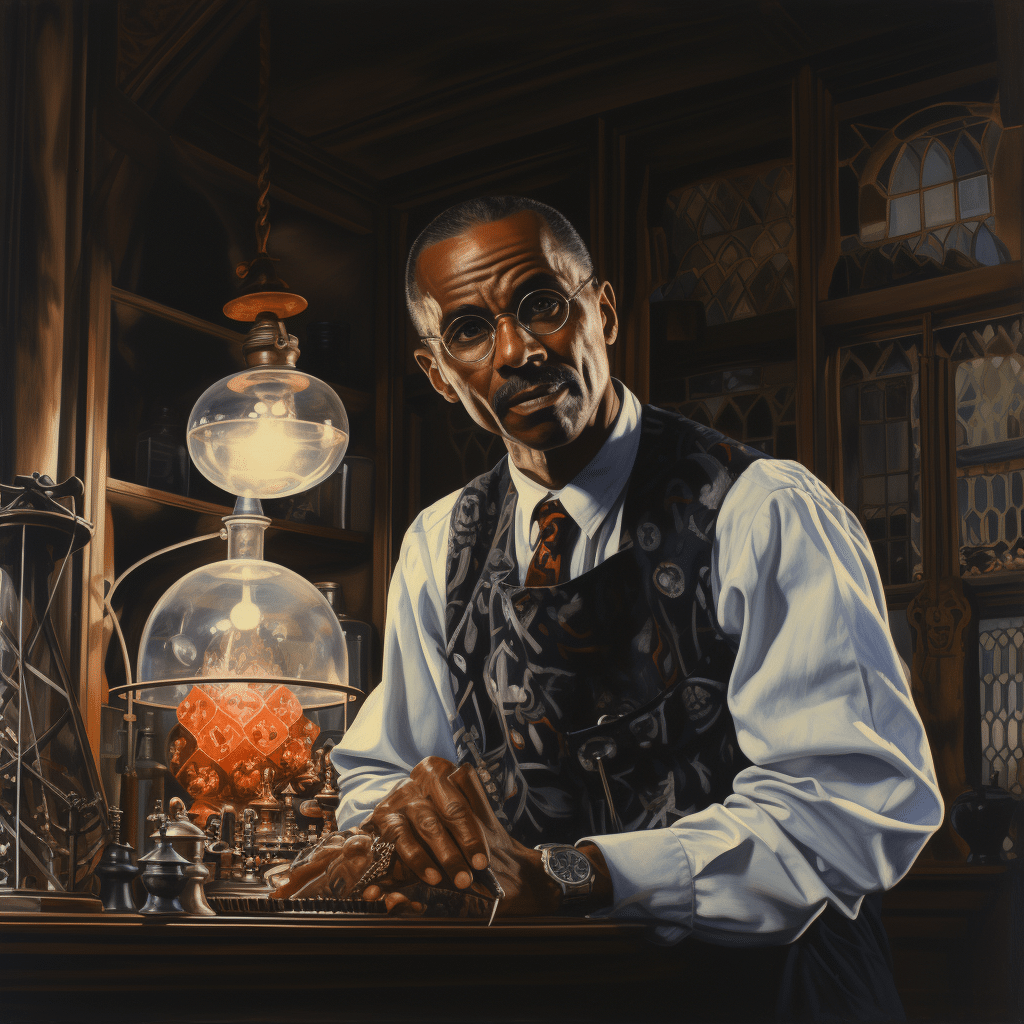
Did Vivien Thomas ever become a doctor?
Nope, Vivien Thomas never snagged that coveted “Dr.” title, but don’t let that fool ya – the man was a surgical wizard behind the scenes.
Why did Vivien Thomas not go to college?
Ah, the age-old snag of finance! Thomas’s college dreams got torpedoed when the Great Depression gobbled up his savings, leaving him high and dry.
How long did the first Blue Baby live after surgery?
Talk about beating the odds! The pioneer “Blue Baby,” Eileen Saxon, got a second wind at life, living to the ripe age of 3 following her groundbreaking surgery.
Were Vivien Thomas and Alfred Blalock friends?
Absolutely! Thomas and Blalock were quite the dynamic duo – from lab benches to operating rooms, they forged a bond that was way more than your average work buddies.
What did Vivien Thomas cure?
Vivien Thomas didn’t exactly “cure” anything, but his ingenuity was key in developing the procedure that put the color back into “Blue Babies” faces.
How accurate was something the Lord made?
“Just the facts, ma’am,” as they say – “Something the Lord Made” sticks pretty close to the truth, but sure, they’ve sprinkled in some Hollywood spice for taste.
How did Vivien Thomas lose his money?
Well, talk about a bad break – the stock market crash of ’29 swept in like a thief in the night, swiping Vivien Thomas’s hard-earned cash right from under his mattress.
How did Vivien lose the money he saved for college?
Vivien learned the hard way that saving up is one thing, but keeping it safe from the twists of fate – or the Depression – is another kettle of fish altogether.
Was Vivien Thomas African-American?
Yep, Vivien Thomas was African-American and, boy, did he ever break through some sky-high barriers in his time!
Is there a cure for blue baby?
Afraid there’s no one-size-fits-all cure for “blue baby” syndrome, but thanks to the work of folks like Thomas, there are surgeries that can help these kiddos catch their breath.
Why is it called blue baby?
Simply put, babies turning blue isn’t a fashion statement – it’s a scary sign they’re not getting enough oxygen, hence the nickname “blue baby.”
Which pollutant can cause blue baby syndrome?
Nitrate alert! This pesky pollutant can wiggle its way into water and raise Cain for babies, leading to the oxygen-deprived blue baby syndrome.
What was Vivien Thomas’s quote?
Giving credit where credit’s due, Thomas once said, “I’ve waited all my life for light to shine on me,” and shine it did, in the end.
Who solved blue baby syndrome?
Solving blue baby syndrome was a tag-team effort, but Vivien Thomas’s brilliance shone through as the unsung hero behind the life-saving surgery.
How much did Vivien Thomas earn per week when he first started working for Dr Blalock?
Let’s talk peanuts – Thomas started off earning a meager 20 bucks a week with Dr. Blalock, which was no small change back in the day, but not nearly enough for his towering talent.

